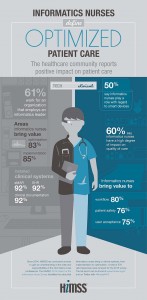 The two most trusted health professionals in the eyes of U.S. consumers are nurses and pharmacists, and both of these health workers will be key partners for people wanting to engage in health/care.
The two most trusted health professionals in the eyes of U.S. consumers are nurses and pharmacists, and both of these health workers will be key partners for people wanting to engage in health/care.
That was my introductory message kicking off the annual conference of ANIA, the American Nursing Informatics Association, in Philadelphia on April 24, 2015. Meeting in the City of Brotherly Love gave ANIA the opportunity to theme the meeting a “Declaration of Nursing Informatics,” carrying that theme through the exhibition hall with a Benjamin Franklin lookalike walking the floor availing himself of attendees’ requests for selfie-taking with the man who wrote, “God helps those who help themselves.”
And so Ben’s maxim about self-help underscored my keynote speech on the new health consumer — DIYing health enabled through consumer technology used in daily life — mobile phones and tablets, computers, apps and even Smart TVs, as I told the nurses about Cox Cable’s joint venture with the Cleveland Clinic called Vivre, channeling remote health monitoring through the cable pipe to subscribers’ homes.
But nurses are more trusted than cable companies, and nurses have the opportunity to bolster health engagement partnering with patients. Nurse informaticists — nursing professionals who also master information technology and the use of data in healthcare — can drive health care transformation.
 “We are going to continue to see the role and use of technology expand in healthcare and the demand for nurses with informatics training will grow in parallel. As clinicians further focus on transforming information into knowledge, technology will be a fundamental enabler of future care delivery models and nursing informatics leaders will be essential to this transformation,” said Joyce Sensenmeier, Vice President of Informatics at HIMSS.
“We are going to continue to see the role and use of technology expand in healthcare and the demand for nurses with informatics training will grow in parallel. As clinicians further focus on transforming information into knowledge, technology will be a fundamental enabler of future care delivery models and nursing informatics leaders will be essential to this transformation,” said Joyce Sensenmeier, Vice President of Informatics at HIMSS.
Those future care delivery models to which Sensenmeier refers are increasingly value-based, where health care providers take on financial risk to manage the health of a population of patients. There’s no driving down costs and improving health outcomes, though, without patients taking on the self-care role at home, at work, and on-the-go.
The Impact of the Informatics Nurse Survey, published by HIMSS in April 2015, found that most nurse informaticists play a role in adopting emerging technologies in health care, especially for medical device integration, smart devices, personalized health care, and remote monitoring — all technologies key for patient engagement in driving outcomes and self-care outside of the doctor’s office.
People are seeking health in daily living – where they live, work, play, pray and learn. During the long round of Q&A following my talk, one nurse professional affiliated with a prominent academic medical center asked, “Are hospitals destined to become dinosaurs?” My response to that question was that, “the hospital must stay relevant in peoples’ lives beyond being an intensive care unit” for a community’s citizens who are very, very ill.
“Hospitals could become a hub of not only healthcare activity, but visionary areas providing financial, policing, libray and other community related advice centres that impact health; healthcare seamlessly embedded in the very fabric of society,” Liz Charalambous, a staff nurse at Queens Medical Centre in Nottingham, England, wrote in February 2015 in NursingTimes.net.
This is the vision of the nurse enabling health, not just health care, with their patients in the community. Couple this care, focused on the social determiants of health, with technology-enabled data analytics that can support behavior change through info-mating and nudging good decisions in peoples’ daily lives via mobile apps and reminders — and nurses, and their hospitals, not only avoid becoming dinosaurs — they usher in a new Golden Age of Health and Wellbeing.
Thank you, ANIA, for giving me the opportunity to brainstorm with your 500+ attendees at the 2015 Annual Conference. You all inspire me to keep the patient, person and caregiver at the center of health.Thanks for doing what you do, so well – “where caring and technology meet.”




 Interviewed live on BNN Bloomberg (Canada) on the market for GLP-1 drugs for weight loss and their impact on both the health care system and consumer goods and services -- notably, food, nutrition, retail health, gyms, and other sectors.
Interviewed live on BNN Bloomberg (Canada) on the market for GLP-1 drugs for weight loss and their impact on both the health care system and consumer goods and services -- notably, food, nutrition, retail health, gyms, and other sectors. Thank you, Feedspot, for
Thank you, Feedspot, for  As you may know, I have been splitting work- and living-time between the U.S. and the E.U., most recently living in and working from Brussels. In the month of September 2024, I'll be splitting time between London and other parts of the U.K., and Italy where I'll be working with clients on consumer health, self-care and home care focused on food-as-medicine, digital health, business and scenario planning for the future...
As you may know, I have been splitting work- and living-time between the U.S. and the E.U., most recently living in and working from Brussels. In the month of September 2024, I'll be splitting time between London and other parts of the U.K., and Italy where I'll be working with clients on consumer health, self-care and home care focused on food-as-medicine, digital health, business and scenario planning for the future...